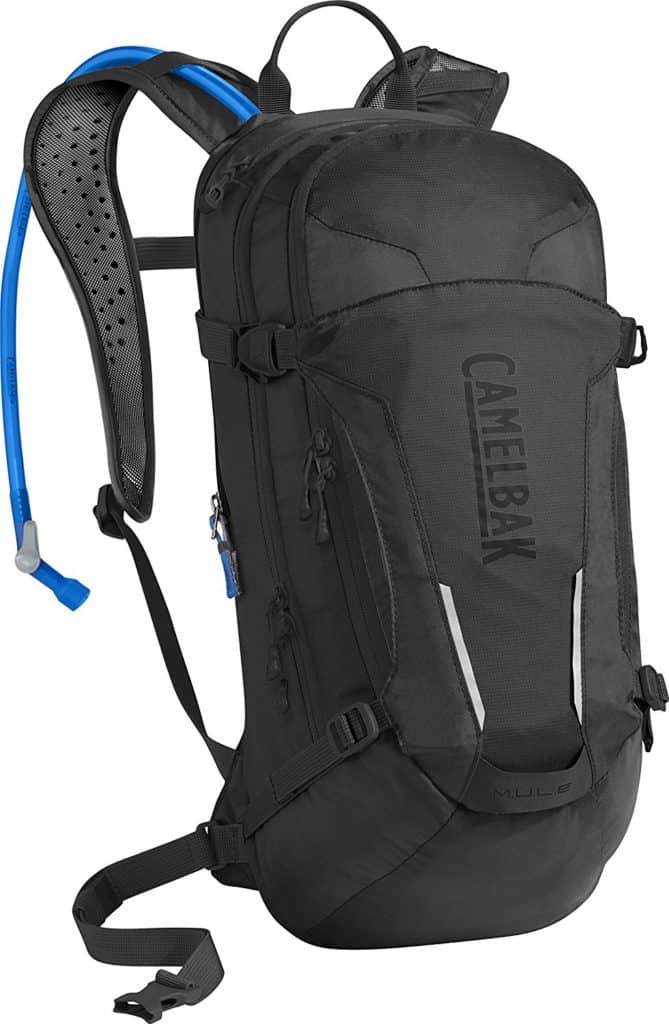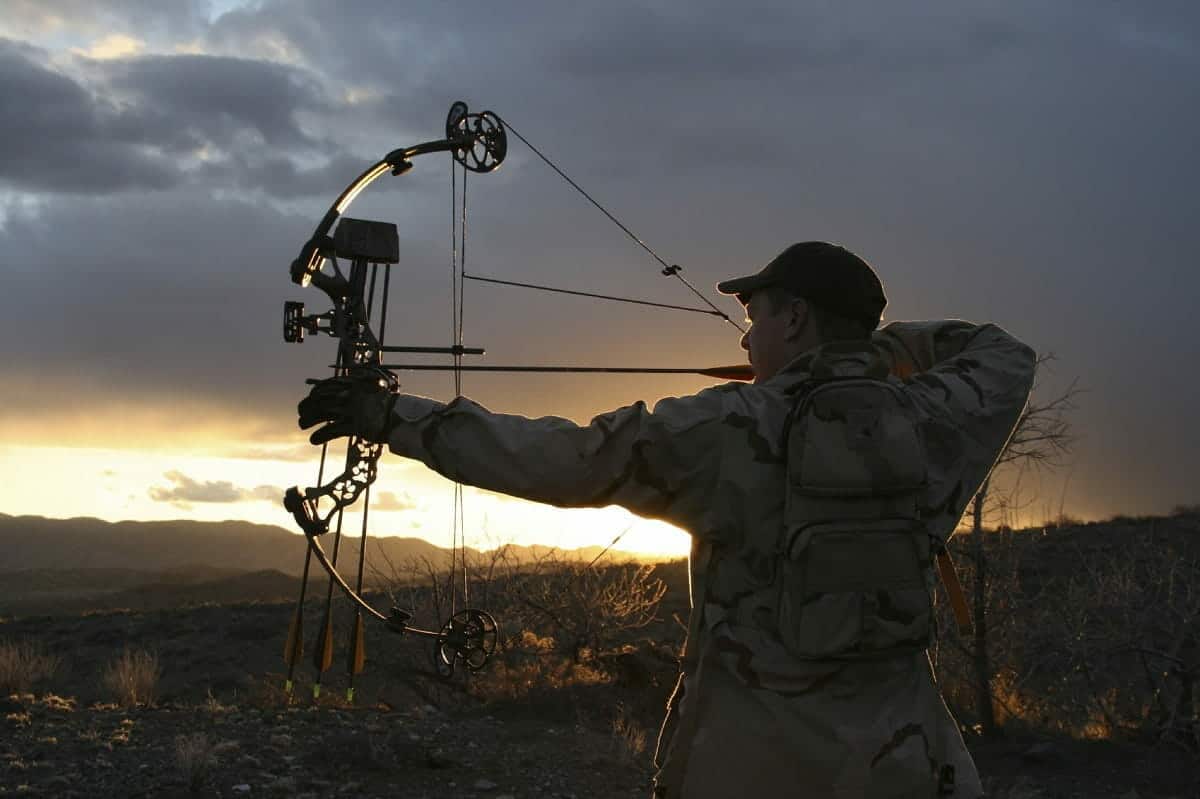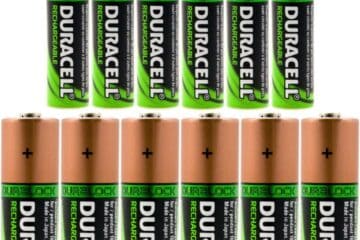Hydration packs are great for hiking, biking, running, and a variety of other activities. The best feature of hydrations packs is that they’re lightweight and they carry the most important resource you need to keep your body performing at optimum levels: water! Fortunately, many packs also store essential gear, tools, and other necessities for your recreational activity of choice.
Deciding on the features that matter most to you is important when selecting a hydration pack, so our list of the 10 Best Hydration Packs compiles this information to aid in the decision. Be sure to read on to our Buyer’s Guide as well for a more detailed breakdown of how to find the perfect pack for your needs.
1. Camelbak M.U.L.E.
Another exceptional hydration pack from Camelbak, the M.U.L.E. was specifically designed for mountain bikers, as it’s right in that sweet spot between size and storage capacity. It can tote a full three liters of water along with a day’s worth of snacks and gear.
The M.U.L.E. offers air channels to keep your back cool even on the hottest of hill climbs and universal helmet hooks to stash your brain bucket while you’re not using it. It also features a Crux hydration reservoir that delivers 20% more water per sip, a magnetic tube trap to keep your tube secure and accessible, and a stretch overflow storage compartment for easy access to a rain shell or extra layer.
2. Osprey Viper 9
The Viper 9 from Osprey is a great hydration pack for hiking, running, and biking. It’s also an ideal pack for any nighttime activities because it offers a blinker light attachment near the base of the front panel for quick light attachment to increase your visibility in the dark.
This pack features a main body constructed from 210-Denier Poly Honey Comb fabric with an accent and bottom of 420-Denier High-Density pack cloth. It also boasts upper side compression straps for load stabilization and an elastic lid-lock helmet attachment system.
3. Nathan Fireball
An ideal hydration pack for elite runners and racers, the Nathan Fireball Race Vest is designed to hug your body so you barely notice it’s there, especially as you’re lying down mile-after-mile at a blistering pace.
The vest is compatible with standard 1.5-liter hydration bladders (not included) and comes with two 12-ounce insulated speeds hot flasks with push-pull blast valves. It also features an expandable main zippered pocket, a phone pocket compatible with sizes up to iPhone 6, and reflective trim for greater visibility in low light situations.
4. Camelbak Fourteener 24
True to its’ name, the leader in hydration packs (Camelbak) has produced a design made for much more than just fulfilling your need for high-quality H20 on the trail. This is a pack meant to help you scale even the tallest of mountains.
It features a 3-liter Crux hydration reservoir with a faster flow rate designed for longer adventures and it boasts an air support back panel that maximizes ventilation while stabilizing the weight of the pack closer to your body. It also offers a dual wing belt, a stretch overflow pocket, and easy attachment points for your trekking poles.
5. Deuter Compact EXP 12
The fine folks at Deuter designed the Compact EXP 12 with a super-tight fit and revised hip wing construction to make it the perfect pack for hitting the biking trails. You’ll be able to go farther carrying less weight with this awesome hydration pack.
The EXP 12 offers an athletic V-cut shape for freedom of movement and an included streamer hydration system with long side zipped compartment for easy access. It also features an integrated detachable rain cover in fluorescent color with reflector logo, wide mesh hip fins with zipped mesh pockets, and accessory loops for gear or helmet holder attachment.
6. Camelbak Areté 18
This hydration pack is a do-it-all option. It works great for day hikes, distance runs where you want a bit more gear, or just for day-to-day use. The pack has plenty of capacity for a laptop, layers, food, and other essentials in addition to its 50-ounce hydration capacity.
The Areté features ultralight and compressible materials and a reversible design that converts into an insulation reservoir sleeve that’s ideal for holding water supply steady inside a larger pack. It also offers a secure zippered pocket on one side and mesh water bottle pocket on the other, as well as a removable sternum strap for custom fit.
7. Platypus Duthie A.M.
The creators at Platypus have designed an ultimate hydration pack for all-day mountain biking excursions here. The pack offers up to 12-liters of storage with internal and external organization for tools, equipment, snacks, first aid kits, and more.
The Duthie A.M. features a 3-liter BigZip hydration reservoir with magnetic hose retention and multiple hose routing options. It also boasts a carry system for pads and full-face helmets, as well as a fleece-lined eyewear pocket, integrated rainfly, commuter light loop, and two pump sleeves.
8. Osprey Raptor 10
The Raptor 10 from Osprey is slightly larger than the Viper 9 we mentioned earlier, so it’s a great hydration pack for longer hikes, trail rides, or day-long road bike training sessions. The pack’s main body, bottom, and accent are all constructed with 70 x 100 denier Nylon Shadow Check fabric.
This Osprey hydration pack offers three interior slip pockets, one interior zip pocket, four exterior pockets, and a removable, rollout tool pouch integrated into the lower zipper. It also boasts lid-lock attachment for bike helmets, easy blinker light attachment for visibility in the dark, and a front panel floating top pocket with side zippered organizer pocket for extra volume and organization.
9. Barbarians Tactical Hydration Pack
No list of hydration packs would be complete without a customizable, MOLLE-compatible tactical option. Barbarians bring us their tactical hydration pack designed for all types of outdoor activities. This pack comes with a replaceable, 3-liter hydration bladder made from BPA-free TPU material (1).
It is constructed from high-density, water-resistant 600-Denier polyester and the pack’s chest and waist straps are adjustable to fit chests in the range of 27 to 50 inches. The pack’s hydration bladder features a wide-screw cap ideal for adding ice cubes and the sealing switch on the tube prevents water leakage.
10. MIRACOL Hydration Pack
The final hydration pack on our list comes to you from MIRACOL. It’s a great pack for running, hiking, cycling, or biking, and it’s also the best choice for those of you that must have the coldest water possible in order to enjoy it.
This pack features thermal insulation that keeps fluids cool for up to four hours. It’s a durable, but lightweight, design and weighs only one pound when empty. It also offers a replaceable two-liter BPA free hydration bladder and multiple storage compartments to help you keep your belongings organized.
—
Buyer’s Guide
At times it may seem there is little that separates hydration packs from one another, but when we look closely we notice features, design elements, and potential red flags that make one pack a much better purchase than another.
In any outdoor activity, the struggle is to match fluid intake to fluid loss. In the interest of helping you find the right hydration pack to help you do just that, this buyer’s guide will focus on three main characteristics: bladder size, storage capacity, and ventilation.
Bladder Size
The packs we mentioned about offer bladder sizes ranging from 1.5-liters to 3-liters. To put water consumption in perspective, the average human body needs about five liters of water per day in a moderate climate with little activity (2).
Keep in mind, that figure is for a full, 24-hour period. All of these hydration packs are designed for daily use, so the real question comes down to how much water you think you’ll need for your most typical recreation activity.
In general, runners tend to carry less water because carrying extra weight takes a toll on knees and ankles. Cyclists also like to be as lightweight as possible, but mountain bikers and day hikers tend to carry a little more because they may be out for longer periods of time.
Storage Capacity
You’ll begin to notice a theme here, but how much additional storage you want in a hydration pack depends on how you’re planning to use it. If you’re a day hiker who won’t go out without the 10 essentials (3), for example, you’ll need to know how much space you need for gear in addition to water capacity.
Most hydration packs for runners and cyclists feature enough storage capacity for a phone, minimalist bike tool, and not much else. Because you’ll mostly be using these packs for shorter durations and (for cyclists) you’ll probably still be within the range of timely assistance if you do have a flat or breakdown, this lack of storage capacity isn’t an issue.
For mountain bikers and day hikers, especially, this extra storage capacity is vital. Deciding just how much you need, however, requires careful calculation of the combined volume of your raincoat, snacks, first aid supplies, multi-tools, and other essential gear.
Ventilation
Over the years, ventilation has become an increasingly popular feature of the industry’s leading hydration packs. Because endurance athletes pushing themselves to the extremes often use these packs, a little extra ventilation goes a long way.
Ventilation can be added in the back, shoulder, and waist areas of a hydration pack. Packs with more open mesh and fabrics in these areas tend to provide better breathability. Many are now integrating mesh-covered foam back pads with air channels for even better ventilation.
The average human body loses between 500 and 800 milliliters of water through perspiration every day with average activity levels (4). As you run, bike, cycle, or hike, your water loss through perspiration only increases, so selecting a pack with great ventilation is extra important.
Frequently Asked Questions
If you’ve owned a hydration pack before, you’re probably familiar with how to operate the hydration system, how to pack other items for a more comfortable fit, and how to properly wash and maintain the bladder, among other things.
With that said, there are inevitable questions that arise as you find yourself in different situations on the trail or road. For both experienced and new users of hydration packs, we’ve put together a useful list of frequently asked questions regarding this type of backpack.
Who invented hydration packs?
Camelbak is credited with the invention of the hydration pack back in 1989 (5). The company’s founder, Michael Eidson (an EMT by trade), was competing in a 100-mile road cycling race when he decided to fill an IV bag with water, slip it into a tube sock, and stuff the whole thing into the back of his bike jersey. Thus, hands-free hydration was born.
What is EVA material?
EVA stands for ‘ethylene vinyl acetate’ which, you guessed it, is a copolymer of ethylene and vinyl acetate. It’s an elastic material similar to rubber, but much tougher. It is mainly used for hydration bladders because of its waterproof and ultraviolet (UV) resistant properties.
What is TPU material?
TPU stands for ‘thermoplastic polyurethane’. It is a hybrid mixture of hard plastic and soft silicone. It is used in footwear, adhesives, and for specialty molding.
What is BPA?
BPA is the abbreviation for the chemical ‘bisphenol-A’. It is a chemical that is added to many commercial products, such as food containers and hygiene products. There are also chemicals known as BPS (bisphenol-S) and BPF (bisphenol-F) that may have the same effect on the body as BPA (6).
How do I properly wash my hydration bladder?
The common recommendation for cleaning a hydration bladder starts with a mixture of hot water and two tablespoons of baking soda or bleach. The solution can be mixed in the bladder. Then, hold the bladder above your head while pinching the bite valve and allowing the water solution to run through the tube. Let the bladder and cleaning solution sit for about 30 minutes before rinsing and drying thoroughly.
What do I do if my hydration tube gets clogged?
In colder environments, some hydration tubes get clogged when temperatures dip below freezing. Some packs offer insulated tubes, but if your tube does get clogged alcohol works pretty well as antifreeze.
Is there a pack just for kids?
Yes, Camelbak makes a great hydration pack just for kids, it is called the Camelbak Kids Mini M.U.L.E.
Can I put hot water in my hydration bladder?
While it’s generally not recommended to do so, many bladders can handle water upwards of 100 degrees Fahrenheit. NEVER, however, put boiling water in your bladder as it may damage it irreparably.
What happens if I lose my bite valve?
Bite valves are possibly the most easily lost or damaged piece of any hydration pack. Fortunately, most manufacturers (as well as Amazon) sell replacements.
Summary
There’s possibly no worse feeling when you’re outdoors than discovering you’ve run out of water. The right hydration pack ensures you have plenty of water for any activity and allows you to refuel on-the-go without fumbling to pull a large water bottle out of your pack. So, it’s time to find the right hydration pack before that summer heat really settles in. We hope you’ve found this article helpful and we wish you the best of luck in finding the perfect hydration pack for you!












